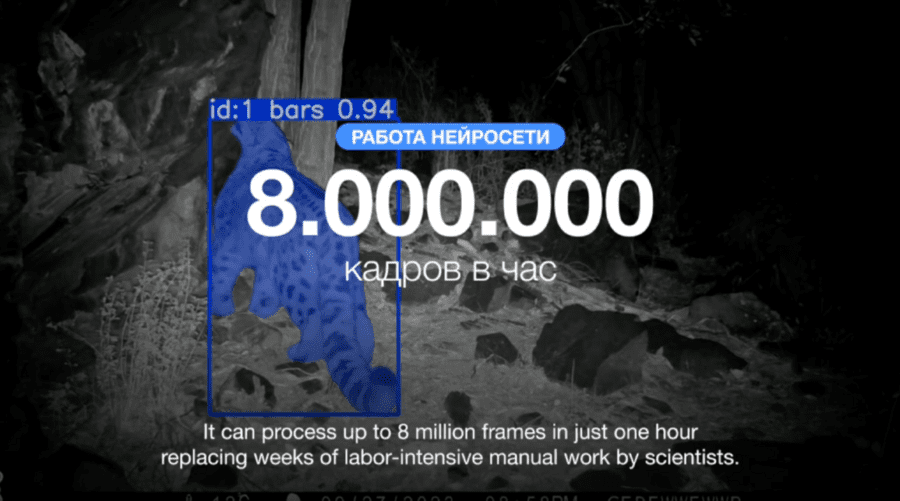How to Craft a Winning Entry for a Marketing or PR Award: A Step-by-Step Guide
- Aug 5
- 4 min read
This year, the Grand Prix at E+ Awards Central Asia — the region’s only marketing effectiveness award — went to the case “Saving Snow Leopards: How AI Supports Ecology, Yandex Cloud” (Brand: Yandex Cloud, Agency: ITCOMMS).
As part of our “Pro Tips” series, we’d like to share the behind-the-scenes of preparing this award-winning entry and offer practical advice for putting together a strong award submission by Evgenia Mamicheva, PR Manager at ITCOMMS

Why Participate in Awards?
Award entries aren’t just about trophies. For brands and agencies in Central Asia, they’re a way to mark professional growth, get external validation, and build reputation. A win boosts trust with clients and partners, while the process of submitting helps teams reflect on their strategy — and turn it into a powerful tool for PR, sales, and future tenders.
If your project also garners media attention or wins a Grand Prix, it becomes a significant news hook and opens doors within the professional community.
Awards also offer internal value — motivating teams, celebrating accomplishments, and encouraging a mindset shift: “What should we do in our next project to make the shortlist — or win?”
How to Choose the Right Awards (and How Many)
Be strategic. Don’t apply just anywhere you can. Align your choices with your project’s goals:
Sustainability-focused case? Look for awards centered around impact and ESG.
Strong business or tech results? Opt for broader marketing competitions.
PR-heavy project? Enter specialized communication or reputation-focused awards.
Also, carefully pick the right category. It’s not always the most obvious one. For our Yandex Cloud entry, we debated between “Society & Sustainability: Brands” and “Society & Sustainability: NGOs.” After analyzing judging criteria and consulting the organizers, we chose the right fit — and it paid off.
Avoid entering too many contests. Each submission is a full-fledged project. Aim for 2–3 well-targeted awards a year across different levels to reach a broader audience effectively.
Read the Rules. Talk to the Organizers.
One of the most overlooked steps: reading the rules thoroughly. Judging criteria, character limits, tone expectations — they’re all there. Often, it’s not the size of the project that wins, but how well the case aligns with what the jury is looking for.
Reach out to organizers. It’s not “cheating” — it’s standard practice. Ask about categories, clarify how to interpret KPIs, or get guidance on formatting.
Tell a Story the Jury Will Believe In
Your submission should read like a compelling, logical story — not a dry report. Begin with a clear problem statement. Then explain your objectives, the chosen solution, execution, measurable outcomes, and conclusions.
Think like a juror. Will they understand your context? In our case, we included a well-known Kazakhstani influencer — but clarified who he is, his reach, and why his involvement mattered, knowing regional judges might not recognize him.
Provide context for your media mentions, influencers, and metrics — don’t make jurors guess.

Don’t Leave Room for Assumptions
Judges may come from:
Related but different industries
Neighboring countries unfamiliar with your media landscape
Roles where your metrics may need further explanation
Our case involved AI. We made sure every jury member, regardless of expertise, could understand how the technology worked and why it was impactful.
Add Drama — Create Tension
Don't be afraid to highlight challenges. Real conflict and contrast make results feel more meaningful. Talk about internal disagreements, external barriers, unexpected twists — this adds authenticity and emotional depth.
Think Like a Juror: Answer “So What?”
Judges are people — they may be tired or pressed for time. Make it easy: pre-empt their questions. Keep it simple, jargon-free, and human. Test your draft with someone who wasn’t involved in the project. If they understand it — you're on the right track.
Build a Visual and Digital Evidence Base
Numbers alone aren't enough. Back your story with videos, screenshots, infographics, media coverage, user feedback, metrics — anything to make the results visible and real.
Also: frame your numbers. “20 million reach” — is that impressive? Compared to what? Always provide context: population size, benchmarks, or typical results in similar campaigns.
Respect the Format
Respecting the format shows professionalism. Stick to the structure. Use bullet points, clear headers, short paragraphs, active voice. Meet word counts. Use a clean, readable layout.
Assign someone to proofread the submission — not just for grammar, but for logic, causality, and category alignment. Small errors affect first impressions before content is even evaluated.

Winning Isn’t the End — It’s a Resource
If you win or make the shortlist, don’t stop at a celebratory post. Leverage the recognition:
Share it across company and personal social media
Add it to your sales decks and “About Us” pages
Pitch the story to media
Mention it in future tenders
Ask clients for testimonials
Submit the same case to other awards
Run internal retrospectives and public knowledge-sharing
Final Thought
Entering awards isn’t just about the outcome. It’s about sharpening your strategy, elevating your storytelling, and building your brand.
Approach it like a standalone project — thoughtfully structured, visually supported, and rigorously tested — and you’ll win much more than a trophy.

